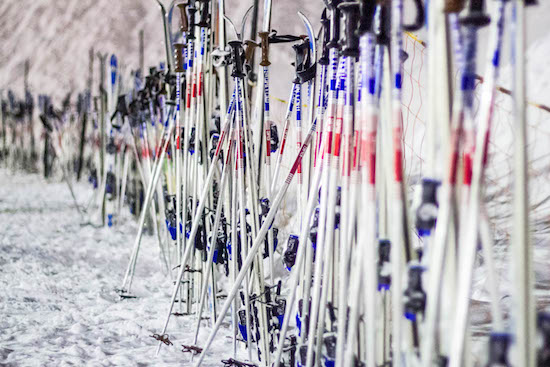Want to know what’s new with women’s boots? I did, too, so I went to talk to Shon Racicot, owner of Bootpro, a new shop opening in late September in Ludlow, VT.
Shon is one of the great bootfitters in the industry. He’s been working with boots since 1986, and is a 15 year graduate of Masterfit University. He previously worked with Northern Ski Works in Ludlow, VT.
SD: Why is bootfitting so important?
SR: I’ve always felt that the boot is the key component to comfort. You can buy any brand of boot, but you have to tweak it to adjust it to an individual’s biomechanics and anatomy. That’s key. Just like a ski; if it’s not tuned correctly, it doesn’t work, no matter how much it costs. The last 10% of adjustment is 90% of performance.
SD: Can you describe the difference between men’s and women’s boots?
SR: It’s driven by anatomy. Women typically have a narrower heel and foot, so women’s boots tend to grip the heel a little tighter. Many women come in and say they have big calves, so their calves hurt in their boots. The truth is that women’s achilles tendons are shorter, so the calf is farther down in the boot, and that makes it seem like they’re larger, even though they’re not. A men’s boot is going to fit higher on the calf. So for women’s boots, you want to make sure you have a scalloped calf.
Women also have a different hip angle than men. The new women’s skis have the mounting point more forward because a woman’s hip structure is farther back. This centers the hips over the skis. This can cause a woman to crouch, pushing the calf forward and really working the quads. It’s like doing wall sits all day; your quads end up killing you. Women need to stand up straighter to support themselves skeletally rather than muscularly. The trick is to let the calf go out the back of the boot and maybe even elevate the toe. That can help you stand stronger.
SD. That’s interesting. I’ve always heard that a lot of women need heel lifts to make them more forward over the ski.
SR. Heel lifts can definitely work. But I’ve noticed that reducing ramp angle in a ski boot can help you stand taller. Everyone is different. It could be driven by the new shaped skis, too. You’re very upright, and you want to lead into that turn with the shovel of the ski. With the old skis, there was a lot of dynamic motion where you had to start at the shovel, work to the middle and end at the tail. Now it’s a very stable position with more subtle movements. Then again, heel lifts may work for some women. Everyone is different, depending on anatomy and biomechanics of the skier.
SD: So what’s the latest in women’s ski boots?
SR: One of the biggest innovations in ski boots is the co-molding of plastics where you can have a soft plastic co-molded with a stiff plastic. So in the zones of the boot where you need rigidity and edge transmission you put the hard plastic. Then you put in softer material where you need the flexibility that allows the skier to suck up terrain and make subtle changes without throwing the ski. Women’s boots can now be made softer, with easier flex.
Atomic has a very good program with its new Hawk series of boots. These have a suspension-like system in the forefoot that allows the boot to really steer the ski. It’s softer, so it allows better edge transission. It’s like an accordian in the forefoot.
We’re also seeing new materials in the liner, so the boots are warmer than they’ve been in the past. Some are actually using wool in their liners. Lange is even using quilted down. Some boots have it just in the toe, and some in the whole liner.
You can get in touch with Shon at his new shop, Bootpro, by phoning 802/228-2776 or by emailing [email protected]


